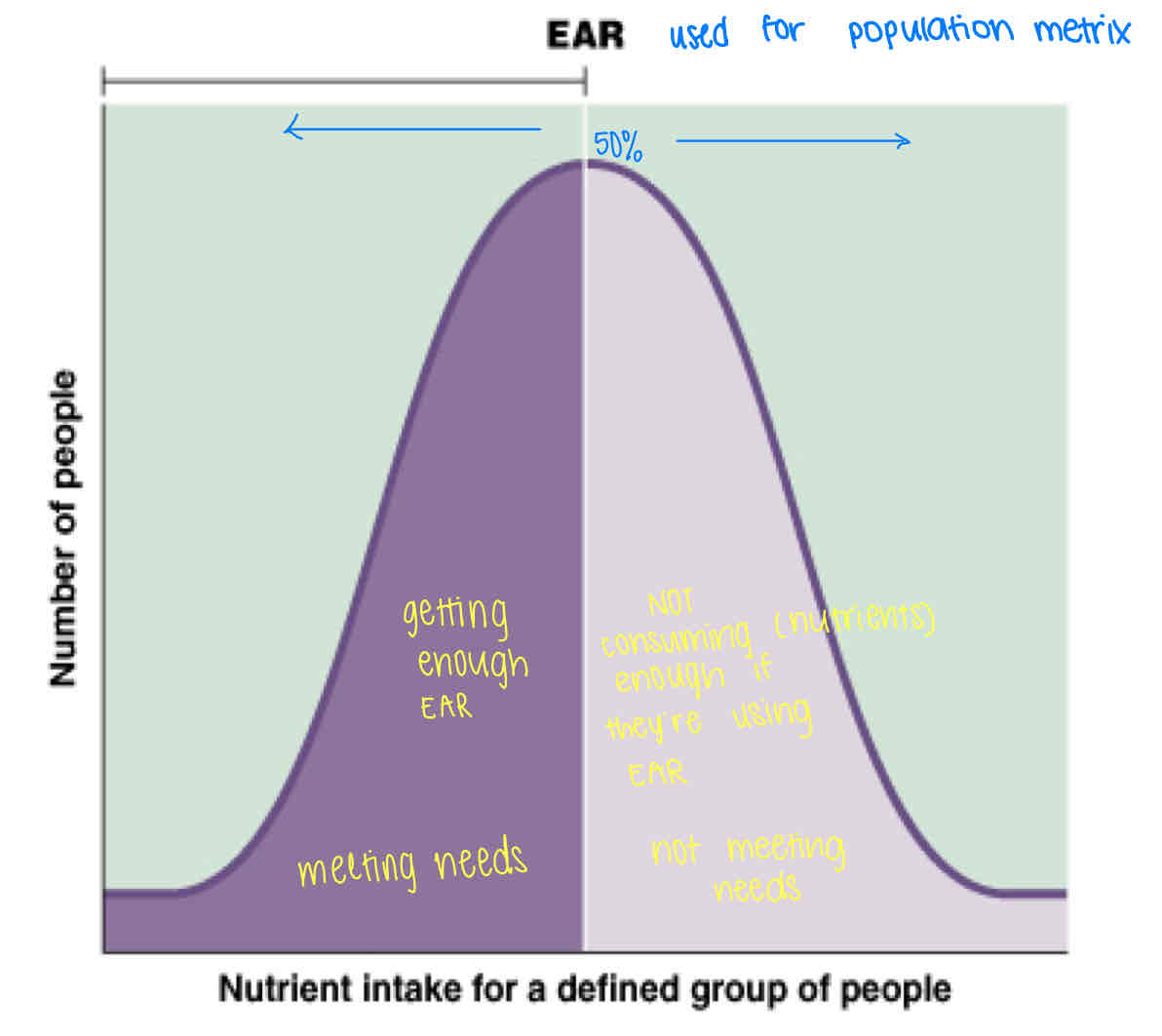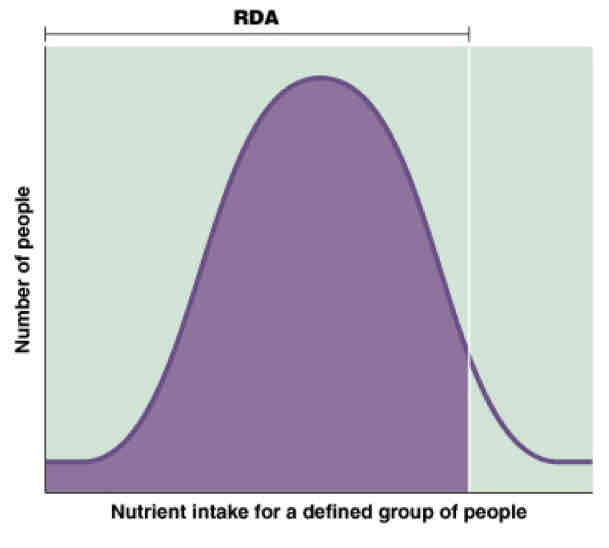DRIs
1/7
Earn XP
Description and Tags
blue = energy and macronutrients. yellow = most nutrients
Name | Mastery | Learn | Test | Matching | Spaced |
|---|
No study sessions yet.
8 Terms
Acceptable Macronutrient Distribution Range (AMDR)
describes portion of energy intake that should come from each macronutrient
AMDR is based upon an individual’s EER
individual’s specific needs may differ based on lifestyle, age, sex, and genetics
percentage of total energy intake from the three energy-yielding macronutrients which will add up to 100%, proportion of each influences other two
RANGES:
protein: 10-35%
fat: 20-35%
carbohydrates: 45-65%
Estimated Energy Requirement (EER)
avg dietary energy intake (kcal) to maintain weight in healthy individuals (measured for specific individual)
based on age, sex, weight, height, level of physical activity to maintain energy balance
DOES NOT REFER TO SPECIFIC NUTRIENT. IT REFERS TO CALORIES COMBINED FROM ALL NUTRIENTS IN ONE DAY
Calculating Energy Value of Food
Energy comes from 3 macronutrients
Fat: 9 kcal/gram
Carbohydrates: 4 kcal/gram
Proteins: 4 kcal/gram
Calculate:
multiply weight of each macronutrient in grams by energy value from above
add kcal for the 3 macronutrients together
Using EER to estimate AMDR
use an EER calculator to estimate your energy needs (daily calorie intake)
calc. the range of calories that should come from each of the macronutrient categories
divide values obtained by calories per gram for macronutrient
EXAMPLE: AMDR for protein
10-35% should come from protein
If EER = 1800 kcal/day
LOW end: 0.10 × 1800kcal = 180 kcal/4g
HIGH end: 0.35 × 1800kcal = 630 kcal/4g
each day you should consume between 45-157.5 g of protein
Estimated Average Requirement (EAR)
“Think middle”
estimated avg daily intake level of a nutrient that will meet the needs of 50% the healthy individuals in a a group defined by age and sex
population metrics
PICTURE
Half of the population’s needs fall above the EAR value (light purple on the graph). This means that they do not have their needs met at the EAR intake level

Recommended Dietary Allowance (RDA)
avg daily intake level sufficient to meet the needs of nearly all people (97-98%) in specified sex and life-stage group
CALCULATED BASED ON EAR VALUE & SAFETY
is the goal for usual intake by an individual
used for Daily Value percentages on nutrition labels

Adequate Intake (AI)
recommended avg daily intake level for nutrients that DO NOT have RDA
when there is not enough info to establish an RDA for a particular nutrient for a specific population AI is used; if there is not enough enough to determine EAR of nutrient and AI is set
based on experimentally derived intake levels or observations of mean intakes by a group of apparently healthy people
Tolerable Upper Intake Level (UL)
highest avg daily intake that is safe for most people
consumption of a nutrient at levels above UL is NOT considered safe